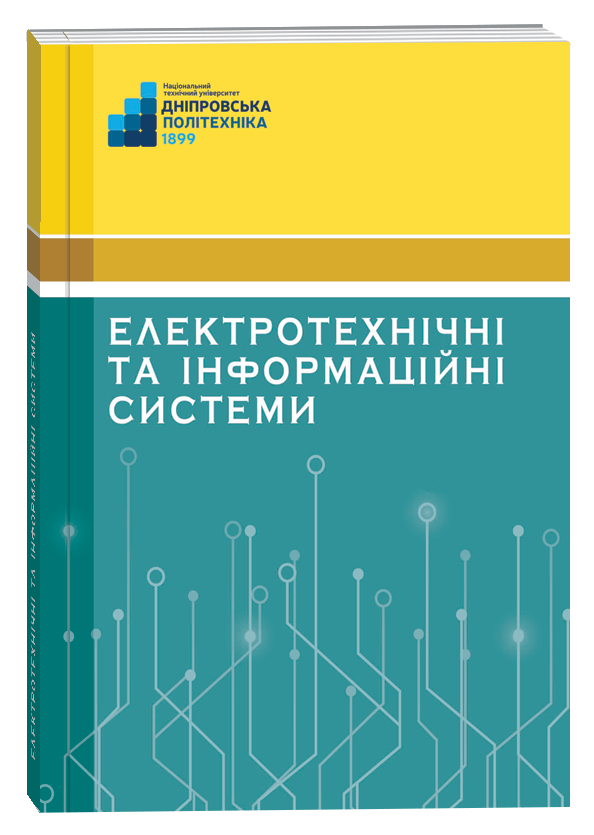ELECTROPHYSICAL METHODS OF FOOD PROCESSING AND THEIR HARDWARE SUPPORT
DOI:
https://doi.org/10.32782/EIS/2024-106-13Keywords:
electrophysical processing methods, physico-chemical indicators, shelf life, microbiological indicatorsAbstract
The relevance of the problem is determined by the need to ensure high quality and safety of food products during their storage period, which is especially important for food products without the addition of preservatives. Nowadays, there is a need to use non-thermal processing methods that preserve the nutritional value and extend the shelf life of products, and to ensure hardware implementation of the process. These problems can be solved by making technological decisions at the stage of manufacturing products using electrophysical methods, which have a positive effect on their microbiological, physico-chemical indicators with the preservation of nutritional and biological value, and the extension of their shelf life. The article is devoted to a literature review of the impact of electrophysical processing methods on food products and their hardware support. The reviewed studies in this field demonstrated the effectiveness of the proposed processing methods in the deactivation of microorganisms in liquid media. Examples of experimental installations and the results of applying electrophysical methods of processing potatoes, mutton, chicory and dairy products were given, while maintaining quality indicators of these groups of products and ensuring their shelf life. It was established that the proposed type of processing demonstrated high efficiency in decontamination of microorganisms and preservation of the biological value of products, in particular milk, meat and vegetables. It was proved that such processing methods can be effective, ensuring a minimal change in their properties. This creates new opportunities for the introduction of energy-efficient technologies in the food industry.
References
Doevenspeck H. Influencing cells and cell walls by electrostatic impulses. / H. Doevenspeck, Fleischwirtschaft, 1961. 13(12), Р. 968–987.
Sale A.J. Effect of high electric fields on micro‑organisms. I. Killing of bacteria and yeast. II. Mechanism of action of the lethal effect A.J. Sale., W.A. Hamilton. Biochim. Biophys Acta. 1967. Vol. 148. P. 781–800.
Wouters P. C. Critical factors determining inactivation kinetics by pulsed electric field food processing. P. C. Wouters, I. Alvarez, & J. Raso. Trends in Food Science & Technology, 2001. 12(3-4), Р. 112–121.
Parniakov O. Applications of pulsed electric fields for processing potatoes. / O. Parniakov, N. Lebovka, A. Wiktor, C. Alles, K. Hill, & S. Toepfl. Examples and equipment design. Research in Agricultural Engineering, 2022. 68(2), Р. 47–62.
Kantono K. Pulsed electric field (PEF) processing of chilled and frozen-thawed lamb meat cuts. / K. Kantono. N. Hamid, D. Chadha, I. Oey, & M. Farouk. Relationships between sensory characteristics and chemical composition of meat. Foods, 2021. 10(5), Р. 1148.
Marynin A. Study of the effect of electro-hydraulic treatment on receiving of fructose-oligosacharide mixtures. / A. Marynin, S. Poznyakovsky, N. Breeus, R. Svyatnenko. Bulletin of NTU «KhPI». Series: New solutions in modern technologies. Kharkiv: NTU «KhPI», 2019. № 10 (1335) С. 93–100, doi:10.20998/2413-4295.2019.10.12.
Дослідження впливу електромагнітної оброблення на мікроорганізми молочної сироватки. / А.І. Українець та ін. Вісник Харківського національного технічного університету сільського господарства імені Петра Василенка. 2016. № (179). С. 146–152.
Вплив імпульсних електричних полів на мікробіологічні показники та вміст вітаміну С в незбираному молоці. / Р.С. Святненко та ін. Науковий вісник Львівського національного університету ветеринарної медицини та біотехнологій імені СЗ Ґжицького. Серія: Харчові технології. 2017. 19. № 80. С. 29–32.
Svyatnenko R. Effect of pulsed electric fields on the amino acid composition of whole milk. R. Svyatnenko, A. Ukrainets, A. Marynin, O. Kochubei-Lytvynenko, M. Boyko. Scientific Works of National University of Food Technologies, 2018. № 24(1). Р. 119–125.
Sampedro F. Pulsed electric fields inactivation of Lactobacillus plantarum in an orange juice–milk based beverage. F. Sampedro, A. Rivas, D. Rodrigo, A. Martínez, M. Rodrigo. Effect of process parameters. Journal of Food Engineering, 2007. № 80(3). Р. 931–938.
Fojt L. Effect of electromagnetic fields on the denitrification activity of Paracoccus denitrificans. L. Fojt., L. Strasák., V. Vetterl. Bioelectrochemistry. 2007. № 70(1). Р. 91–95.
High-voltage spark dischargers for technological installations. / N.I. Bojko et al. Pribory i Tekhnika Ehksperimenta, 2001. Р. 79–88.
Inactivation of microorganisms with pulsed electric fields: Potential for food preservation. / P.C. Wouters et al. Food Biotechnology. 1997. Vol. 11. № 3. P. 193–229.
Non‑thermal food preservation: pulsed electric fields / H. Vega-Mercado et al. Trends in Food Science & Technology. 1997. Vol. 8, May. P. 151–157.
Food pasteurization using high-intensity pulsed electric fields / B.L. Qin et al. Food Technol. 1995. № 12. Р. 55–60.





